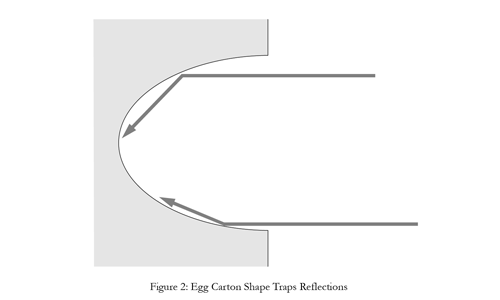AudioTuts has just posted a new article from the author of The Encyclopedia of Home Recording. A set of tips on how to keep organized in the recording studio to make your recording sessions go smoother. Check it out here: Quick Tip: 5 Ways To Stay Organized In The Studio.
The Encyclopedia of Home Recording
A Complete Reference for the Home Studio
Page 2 of 3
Whether you’re recording at home or professionally, using a track sheet is a great way to keep track of your sessions and keep them organized. It’s also extremely useful when you want to reproduce a great sound you got on a session. Here’s a free pdf track sheet that you can download and print for your recording sessions:
Most home recordists are familiar with using delay effects, but the really good recording engineers know how to use delay subtly as a rhythmic device with the tempo of the song, and can use it to affect the song’s overall feel.
AudioTUTS has posted another excerpt from The Encyclopedia of Home Recording which explains how to use delay effects well and how to calculate delay times for an individual song. Check out the article here.

The good folks over at AudioTUTs have posted another expert from The Encyclopedia of Home Recording! Today they’ve posted the Auxiliary Send entry. Check out the entry here to learn about how to use auxiliary sends for effects, submixes and monitor mixes.


A major factor in the quality of a sound recording, though one often overlooked by home studio users, is the acoustics of the room the recording is being made in. Understanding acoustics and how to manipulate them can help you get better recordings.
The good folks over at AudioTUTS have published an excerpt from the Acoustics entry in The Encyclopedia of Home Recording which provides insight into the role of acoustics in home recording and what you can do about it without huge renovations to your home. Check out the article here.
Those of you with Kindles, or who like to use the Kindle app to read books on your home computer will be happy to know that The Encyclopedia of Home Recording is now available as a Kindle ebook. This format makes this home recording reference fully searchable and all cross-references are linked making it easy to keep learning. Check it out at the Kindle Store.

One question that many beginner recordists is about preamplifiers, what they do, and when you need them. AudioTUTS has just posted an excerpt from The Encyclopedia of Home Recording that answers all your questions about preamps. Check it out here.
For more answers to your recording questions be sure to check out The Encyclopedia of Home Recording, available in trade paperback and Kindle ebook!
One of the things that gives professionals an advantage over those who record at home is a thorough understanding of how sound works and where problems are likely to arise. The folks over at AudioTUTS, a recording and audio production blog, have posted an excerpt from The Encyclopedia of Home Recording that explains a fundamental element of sound that can cause some big problems, phase.
Taking a moment to read and understand this important aspect of sound can save you a lot of headaches and improve the quality of your recordings. Check out the article here.


Mixing is where all the efforts of recording come together. If you don’t know what you’re doing when it comes time to mix, even well recorded tracks can end up muddy and unintelligible.
AudioTUTS, a recording and audio production blog, has posted an excerpt from The Encyclopedia of Home Recording on the subject of mixing. This article will help give you an in depth understanding of the aspects of the mix that you need to think about as well as tips on how to improve your mixes. Check it out here.

In the home recording world we use decibels to measure sound pressure as well as to describe relative changes in signal level. Sound confusing? Not to worry, The Encyclopedia of Home Recording is here to help. An excerpt from the book has been published over at AudioTUTS and gives some insight into the meaning and use of decibels. Check the article out here.

© 2024 The Encyclopedia of Home Recording
Theme by Anders Noren — Up ↑

